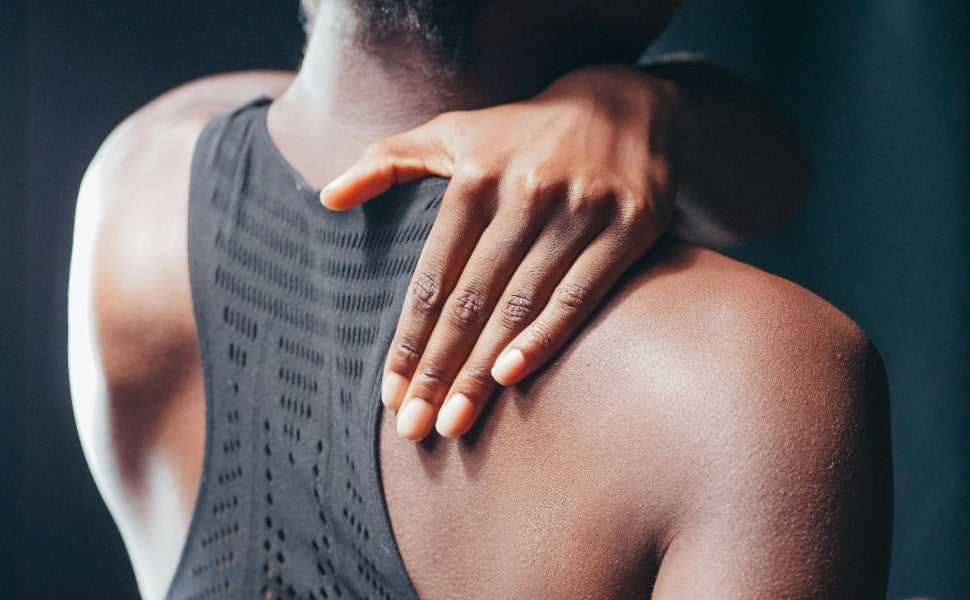What to Do When You Throw Your Back Out?

Ever experienced radiating pain in your lower back? It can leave you wondering if your back muscles just gave up on you! The back is a major support structure in your body and needs to stay in good condition for you to carry out everyday tasks.
Throwing your back out means that you have strained your muscles, which can result in severe lower back pain. It may happen due to lifting heavy objects, stretching, disc slip, spasm, or from improper posture.
Fortunately, you can recover from a thrown-out back with exercise and using back relief products, such as lower back support, back support braces, and pain relief ointments. But first, you must understand how to respond to a back injury.

Importance of Understanding How to Immediate Respond to Back Injury
Around 75-85% of Americans experience some type of back pain during their life, which makes it a pretty common injury.
Whether you had a good gym session or you stretched inconveniently, this lower back pain could indicate that the muscles on your back have taken the impact. Common symptoms are consistent pain, spasms, stiffness, and localized pain in the lumbar region.
When we throw our back out, prompt recovery is crucial to prevent further complications. Since a thrown-out back often is the result of a muscle strain or spasm, symptoms generally resolve within a few days to weeks on their own or by using back relief products. However, severe injuries involving blood vessels, ligaments, tendons, and spinal disks require immediate medical treatment.
The spinal cord is a complex and vulnerable structure. Neglecting immediate care can not only aggravate the injury but also cause prolonged pain with limited mobility. Besides that, a delayed response to a herniated disc can cause persistent nerve damage. Similarly, other injuries involving the vasculature can also result in permanent neurological problems.
Therefore, knowing what to do when you throw your back out will shorten recovery time and improve the healing outcome. For instance, the use of right back relief products such as a full back support brace, therapeutic pillows, or topical pain relief medications can help alleviate and manage back pain effectively.
Potential Causes of Back Injuries
There are many causes of back injuries, which vary from individual to individual. Some of the leading causes are as follows:
- Fitness Level: Lack of exercise and stretching causes muscle spasms.
- Work-related Factors: Heavy lifting, twisting, or improper posture for long durations.
- Poor Sleep Habits: Sleeping on an unsupportive mattress or in awkward positions stiffens back muscles and results in a misaligned spine.
- Stress and Anxiety: High stress levels that cause muscle tension in the lower back.
- Dehydration: Dehydration impacts the health of our intervertebral discs, which act as a shock absorber between the vertebrae in the spine. The spine is more susceptible to injuries if these discs lose their flexibility.
- Excessive Smoking: Smoking results in degeneration of the spinal disc, causing pain and discomfort. This is because nicotine impairs your body's healing ability.
- Back Overload: Heavy backpacks that strain the muscles in the back.
Besides these factors, the discs in the spine degenerate over time, putting direct strain on the back muscles and tendons. However, don't panic. Back relief products can mitigate back injuries in most cases. We will learn about them later in this guide.
Back's Anatomy and Common Injury Symptoms
Understanding the anatomy of the back can help us know more about the occurrence of back injuries. Our back has a group of muscles and tendons intricately woven by ligaments that work together to facilitate movement.
Major Muscles of the Back
The major back muscles are as follows:
- Trapezius – Elevates and depresses the scapula.
- Levator Scapulae – Elevates the scapula.
- Latissimus Dorsi – Extends and rotates the arm.
- Rhomboid Major and Minor – Retract, rotate, and elevate the scapula inferiorly.
- Erector Spinae – Set of muscles running along the spine that help extend and bend the head, neck, and trunk.
- Teres Major and Minor – External and internal shoulder movement and arm adduction.
- Infraspinatus – Rotate the arm and stabilize the shoulder joint.
Out of all the above back muscles, the trapezius, latissimus dorsi, and erector spinae are much larger and easily identifiable.
Tendons and Ligaments
Along with back muscles, there are tendons and ligaments. Tendons are cord-like tissue bands that connect back muscles to bones. On the other hand, ligaments are thick tissue bands that connect bones to each other. Think of these two as the pillars on which our back stands. When you experience a back injury, it is often the result of a sprain in these primary tissues.
Symptoms of Back Injury
Back injury is detectable with many different symptoms. Some of the common ones are as follows:
- Sharp pain
- Stiffness
- Muscle spasm
- Reduced mobility
- Tightening of the muscles
- Difficulty standing up straight
- Unable to stretch
- Numbness or tingling sensation
Furthermore, you must pay attention to symptoms such as numbness, tingling, and weakness in the legs, as they indicate a more severe injury due to nerve involvement. Overall, recognizing the above symptoms early on can help you take the proper measures to manage the injury effectively.
Immediate Dos and Don'ts When Responding to a Back Injury
Let's now talk about the universal laws of recovery: immediate attention and quick response! Here are some dos and don'ts when responding to your back injury:
Dos:
- Rest: You should lie down, place a pillow under your knees, or use a back brace.
- Ice: Apply an ice pack for 15 minutes every 2 hours to reduce inflammation.
- Use Back Relief Products: Use products such as back braces to support the spine and muscles.
- OTC Pain Reliever: Take an over-the-counter anti-inflammatory medication, such as ibuprofen or naproxen sodium. You can also take acetaminophen to relieve pain.
- Exercise: Exercise to ease the tension in your muscles.
Don'ts:
- Avoid Too Much Bed Rest: Too much bed rest can lead to stiffness and weaken your muscles.
- Don't Lift Heavy Objects: Don't lift heavy objects, as it will worsen your back injury.
- Avoid Sitting Without Support: Sitting for long periods without proper back support for work can cause pain and hinder the recovery process.
- Don't Ignore Pain Signals: Reduce activities that trigger pain to prevent your injury from getting worse.
Physical Therapy, Exercises, and Tools for Better Recovery
After a back injury, resting on the bed does not magically heal your back! But then what does? Professional physical therapy, a combination of gentle exercises, and some back relief products are your best buddies when it comes to recovering quickly!
So, forget about lying on the bed for hours and consult a physiotherapist. Physiotherapy techniques focus on strengthening the back muscles and relieving muscular tension.
Have you heard of pelvic tilts and bridges? This is the time to become familiar with yoga and gentle exercises to introduce flexibility in your back muscles. But don't forget that starting slowly and swiftly is the correct way for long-term recovery.
Moreover, now is the time to purchase a comfier mattress. Some back relief products, such as orthopedic mattresses, back braces, and cushions, help improve posture and provide much-needed back support. So, without further delay, open the doorway to a quick recovery with these strategies.
Using Fivali Back Brace for Back Injury
By now, we have learned that we can manage a back injury by using the right tools for back support and following proper guidelines. But what's the best tool for a holistic approach?
Fivali's back brace meet the demands of an active lifestyle, giving you the support needed to cushion the muscles in your back. The double-layer fastening straps tightly hug your back muscles, adapting to body movements and assisting in back injury recovery. In addition, these straps also help align your back muscles, reducing the strain and preventing injury.
To wear Fivali's back brace:
- Place it around your lower back, aligning it with your spine.
- Fasten the lowest strap.
- Use the double-layer fastening straps if you like a more secure fit.
- Adjust each strap, allowing comfortable breathing and freedom of movement.
- Stand up straight and make sure it doesn't restrict your movement.

That's it! Your back is now well cushioned and on the road to recovery.
When you throw your back out, every step, from recognizing the symptoms to implementing the correct recovery strategies, counts. While physical therapy and exercises are important, you must not forget about adequate back support to give quick relief to your back.
At Fivali, we are dedicated to enhancing fitness efficiency and reducing the risk of accidental injuries. Our back relief products are an innovative solution for pain relief, back support, and injury prevention.
Whether you are looking for lower back support for work or an effective posture corrector, Fivali has it all! Explore the wide range of back brace products to join the Fivali community and experience the difference we make in your recovery process!
-
Posted in
Back pain causes, Brace, Pain, Recovery













